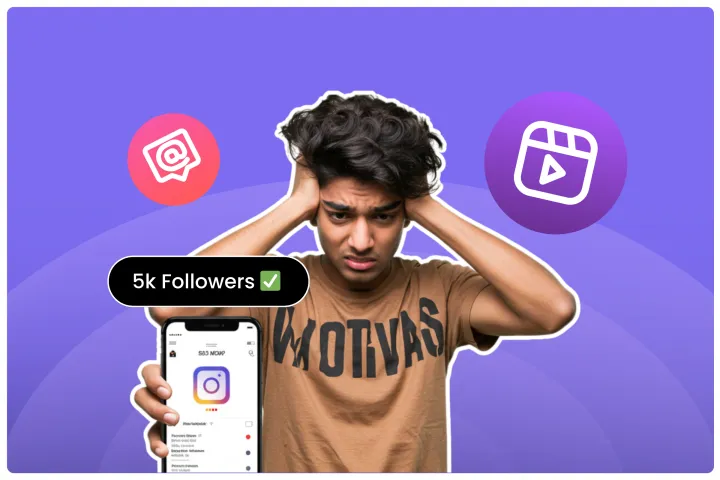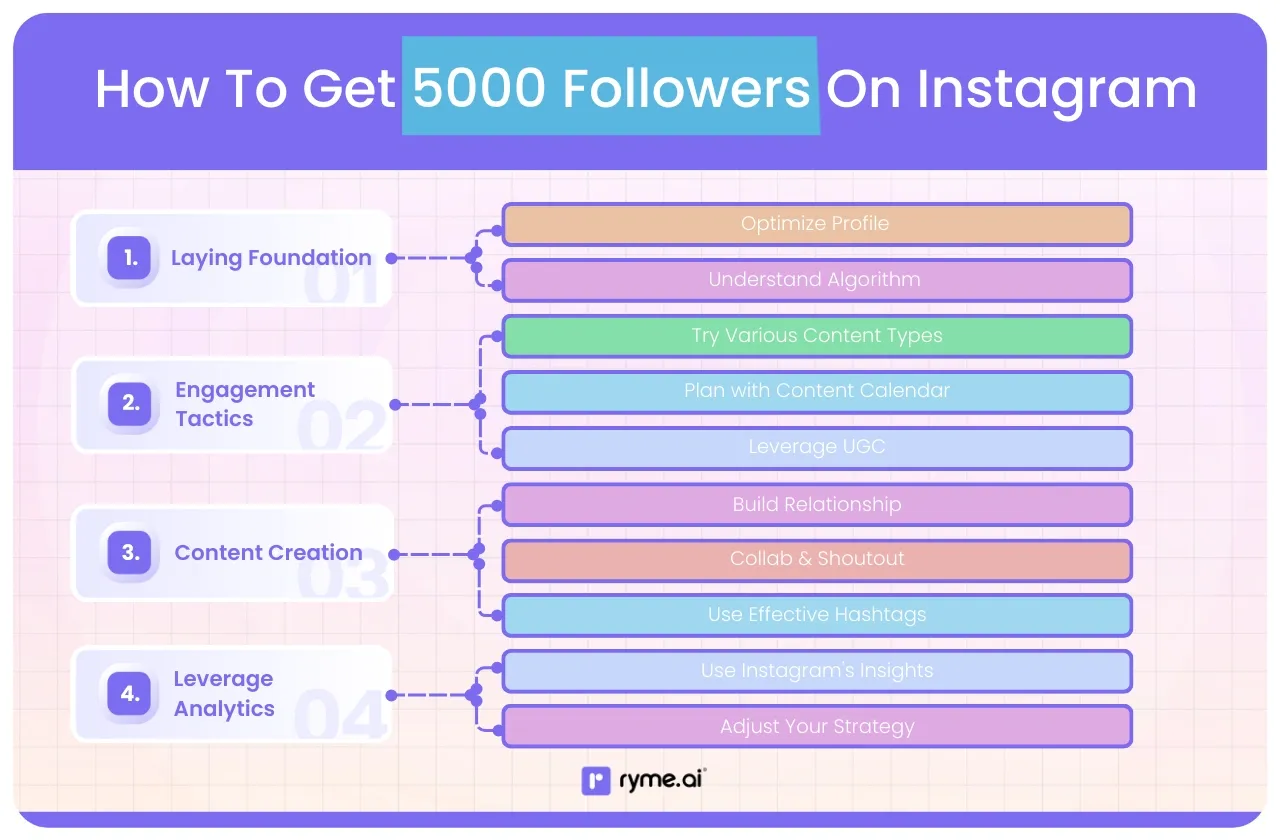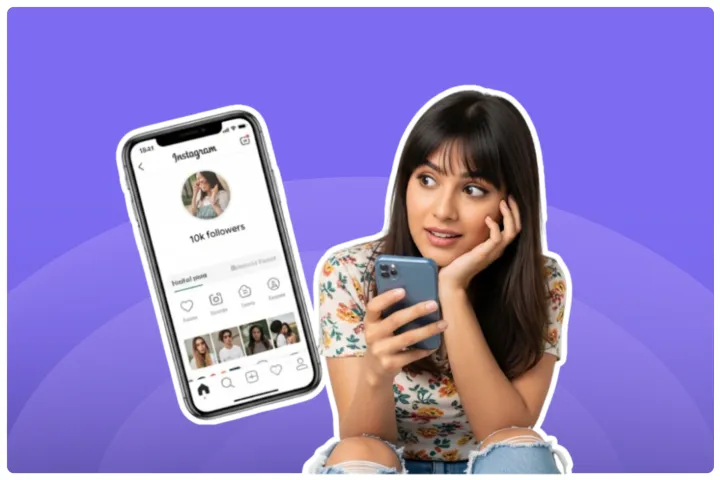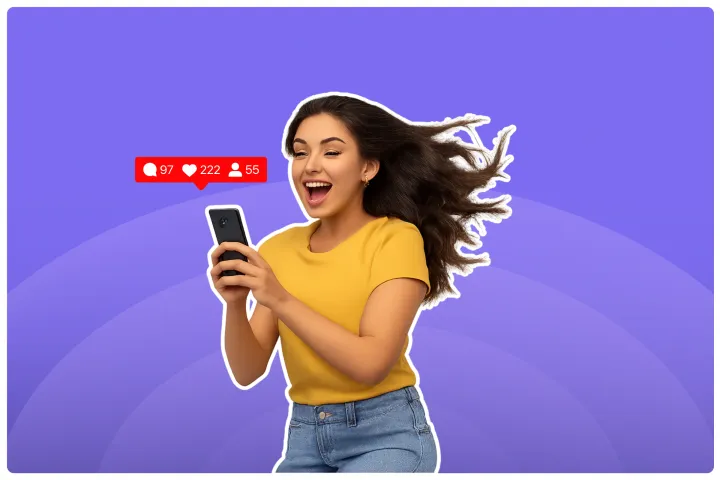How To Get 5000 Followers On Instagram: A Guide (2025)
Want to grow your Instagram? Check out our ultimate guide on how to get 5000 followers with tips and tricks that really work!

Ready to level up your Instagram game? Hitting 5,000 followers feels like a huge milestone, and guess what? It’s totally within your reach. This isn't just a vanity number; it's a doorway to brand deals, monetization, and a stronger community. Let's break down how you can get there, step-by-step. No fluff, just actionable advice to get you growing.
How To Get 5000 Followers On Instagram: Step-By-Step
Getting to 5,000 followers is a journey, not a sprint. We will break it down into four manageable steps. Think of it as building a house: you need a solid foundation, great architecture (your content), a welcoming atmosphere (engagement), and a way to know what's working (analytics).

Step 1: Laying the Foundation
Before you can attract a crowd, you need to make sure your space is ready. Your Instagram profile is your digital storefront. It needs to be inviting and tell people exactly what you’re about in seconds.
- Optimize Your Profile: Your username, profile picture, and bio are the first things people see.
- Username: Keep it simple, memorable, and close to your name or brand. Avoid long strings of numbers or underscores.
- Profile Picture: Use a clear, high-quality headshot where your face is visible. If you’re a brand, use your logo. People connect with faces!
- Bio: You have 150 characters to shine. Tell people who you are, what you do, and who you do it for. Use keywords related to your niche. For example, instead of "I like food," try "Mumbai-based Food Blogger sharing simple vegetarian recipes." Don’t forget a call-to-action (CTA), like "👇 Check out my latest recipe!" and a link.
- Define Your Niche: You can't be everything to everyone. Trying to appeal to all will result in connecting with no one. What are you passionate about? What could you talk about for hours? Whether it's sustainable fashion, financial tips for students, or gluten-free baking, picking a niche helps you attract the right followers who genuinely care about your content. A great way to start is by looking at some of the fastest-growing Instagram niches for inspiration.
Step 2: Content Creation Strategies
Content is the heart of your Instagram account. It's how you provide value, build trust, and keep your audience coming back for more.
- Establish Content Pillars: Don’t just post randomly. Create 3-5 content pillars or themes. For a fitness influencer, pillars could be:
- Workout tutorials (Reels)
- Healthy meal prep (Carousels)
- Myth-busting Q&As (Stories)
- Motivational progress posts (Single Images) This keeps your content focused and gives your audience a reason to follow.
- Prioritize Quality & Consistency: Every post should be valuable. It should either educate, entertain, inspire, or solve a problem for your audience. Ask yourself, "Would I save or share this post?"
- Reels are Your Best Friend: Instagram is heavily pushing Reels. They are your golden ticket to reaching new audiences. A recent study shows that Reels can have a reach rate of over 33%, which is double that of other post formats.
- Carousels for Education: Use carousel posts to share tips, step-by-step guides, or tell a story. They have high engagement because people spend more time swiping through them.
- Stories for Connection: Use stories for behind-the-scenes content, polls, and Q&As. This is where you build a personal connection with your followers.
Let’s take Riya, a budding fashion influencer from Delhi. She started with 800 followers. She decided to focus on creating "Outfit of the Day" Reels set to trending audio and educational carousels on "How to Style a White Shirt in 5 Ways." By posting 4-5 high-quality Reels and 2 carousels a week, she hit 10k followers in just 3 months. The key was consistency and providing real value.
Step 3: Engagement Tactics
Instagram is a social network, so you need to be social! Engagement is a two-way street. It signals to the algorithm that your account is active and valuable.
- Respond to Everyone: Reply to every comment and DM. It shows you care and encourages more people to interact with your future posts.
- Engage with Others: Spend 15-30 minutes a day interacting with accounts in your niche. Leave thoughtful comments on their posts (more than just "Nice post!").
- Use Interactive Story Stickers: Polls, quizzes, and question stickers are easy ways to boost engagement and learn more about your audience.
- The 5-3-1 Rule: A simple strategy to try is the 5-3-1 rule. For every piece of content you post, go and Like 5 posts, leave 3 comments, and find 1 new account to follow within your niche. It’s a proactive way to build community.
Step 4: Leveraging Analytics
Data is your friend. Your Instagram Insights tell you exactly what’s working and what’s not.
- Know Your Numbers: Go to your professional dashboard and check your Insights. Pay attention to:
- Reach: How many unique accounts saw your post?
- Engagement Rate: (Likes + Comments + Saves + Shares) / Reach. A good engagement rate for an account under 10k followers is around 0.74% as of 2024, according to Oberlo.
- Saves & Shares: These are super-metrics! They tell the algorithm that your content is highly valuable.
- Adjust Your Strategy: Look at your top-performing posts. What do they have in common? Are they Reels? Carousels? Do they cover a specific topic? Double down on what your audience loves. If you notice your Instagram followers have decreased, your analytics can help you understand why.
How to Monetize and Grow Beyond 5,000 Followers On Instagram
Once you hit 5k followers, you enter the exciting world of nano-influencers. Brands love working with you because you have a highly engaged and trusting audience.
Method #1: Brand Collaborations
This is the most common way to earn money. Brands will pay you to promote their products or services.
- Paid vs. Barter: A barter collaboration means you get a free product in exchange for a post. A paid collaboration means you get cash. At 5k followers, you can start demanding paid deals. For a single post, a nano-influencer in India can earn anywhere from ₹5,000 to ₹15,000.
- How to Pitch: Create a media kit (a one-page PDF with your stats, audience demographics, and past work). Find brands you love and that align with your niche. Send them a personalized email or DM. You can find out more about what a paid partnership on Instagram entails to be better prepared.
Method #2: Affiliate Marketing
You promote a product using a unique link or code. When someone makes a purchase through your link, you earn a commission. It’s a great way to earn passive income. Platforms like Amazon Associates and the Flipkart Influencer Program are great places to start.
Method #3: Expanding to Other Platforms
Don’t put all your eggs in one basket. Use your Instagram following to build a community on other platforms like YouTube or a personal blog. This gives you more ways to connect with your audience and more assets to offer brands, increasing your earning potential.
ryme.ai: To Grow and Monetize Your Instagram
Feeling overwhelmed? Tools can help streamline your growth and monetization efforts. ryme.ai is an AI-powered platform designed specifically for creators like you. It connects you with brands for paid campaigns, making the process seamless.
Here are some Features Beneficial for Influencers using ryme.ai:
- Smart Brand Collaborations: Its AI matches you with campaigns that fit your niche and audience perfectly.
- Instant Payments: No more chasing brands for payments. Get paid as soon as you complete your work.
- Effortless Campaign Management: Manage all your collaborations from a single dashboard.
- Data-Driven Insights: Get the analytics you need to optimize your strategy and prove your value to brands.
- Zero Subscription Fee: It’s free to join, making it accessible for creators at every stage.
Conclusion
Reaching 5,000 followers is an amazing achievement that opens up a new chapter in your creator journey. It requires a solid foundation, a smart content strategy, genuine engagement, and a willingness to learn from your analytics. Remember Riya’s story – consistency and value are your secret weapons. Stay authentic, connect with your community, and don't be afraid to put yourself out there.
FAQs Related to Growing Instagram Followers
1) Is it hard to get 5k followers on Instagram?
It requires effort and consistency, but it’s not impossibly hard. If you focus on a specific niche and create high-value content, especially Reels, you can get there faster than you think. The key is to be patient and persistent.
2) How much does Instagram pay for 5000 followers?
Instagram doesn't pay you directly for having followers. Your income comes from monetizing your influence. As a nano-influencer with 5k followers in India, you can earn from ₹5,000 to ₹15,000 per sponsored post, along with income from affiliate marketing and other collaborations.
3) How to get from 1000 to 5000 followers for free?
Everything in this article outlines the free, organic way to grow! Focus on creating shareable Reels, using targeted hashtags, collaborating with other creators, engaging genuinely with your community, and consistently providing value.
4) What is the 5-3-1 rule on Instagram?
The 5-3-1 rule is a simple engagement strategy to gain new followers. The idea is to interact with content in your niche by liking 5 photos, commenting on 3 photos, and hopefully gaining 1 new follower as a result of your genuine interaction. It’s about giving before you receive.



